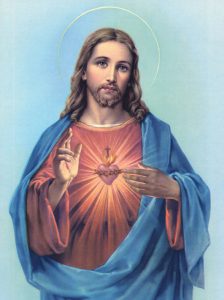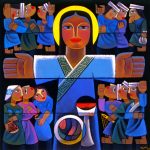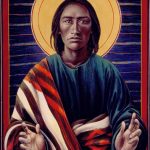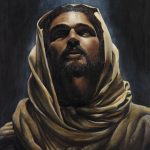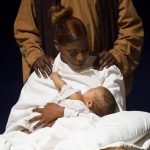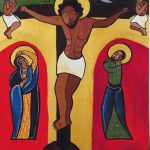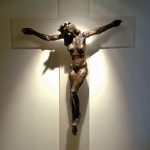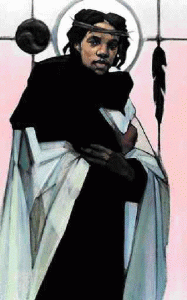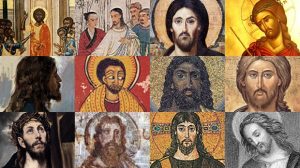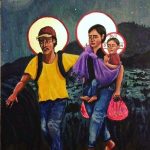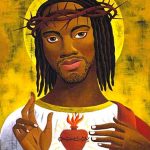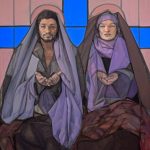Mark 10:35-45
The disciples still don’t get it.
If you were here a few weeks ago, as we were working our way through the gospel of Mark, you may recall that the disciples spend time arguing with each other about who is the greatest. Jesus tries to explain: Whoever wants to be first must be last of all and servant of all.
Later, the disciple John tries to get praise from Jesus by reporting that he tried to stop another healer from healing in Jesus’ name. Jesus tries to explain: anyone who is not against us is for us; there is no hierarchy among those doing good.
As the Gospel continues from there, the disciples try to keep children from coming to Jesus. Jesus tries to explain: it is to such as these that the Kingdom of God belongs: not to rich or important adults, but especially to children.
But the disciples still don’t get it. They are still struggling to understand that with God, social hierarchies are tipped over and turned inside out; no one is left out and everyone is invited in, everyone is precious.
Now James and John come to Jesus saying, “Teacher, we want you to do for us whatever we ask of you.”
What a set-up. Jesus is no fool. He asks: “What is it you want me to do for you?”
James and John say, “Grant us to sit, one at your right hand and one at your left, in your glory.” In other words, promise us the best seats in heaven.
And Jesus tries to explain — again. “You know that among others, those they recognize as their rulers lord it over them, and their great ones are tyrants over them. But it is not so among you; whoever wishes to become great among you must be your servant, and whoever wishes to be first among you must be slave of all. For the son of man came not to be served but to serve, and to give his life for many.”
The realm of God doesn’t have a throne room, apparently, or a long rectangular banquet table, in which chairs are arranged in order of precedence. Greatness comes not through placement, or abuse of power, but through service, and sacrifice, and generosity.
This month I am using images to help us reflect on scripture. Last Sunday, we used images to explore who God is and how God works, according to the second story of Creation.
Today we turn our attention to Jesus. How do we imagine this Jesus, this Son of Man — someone who is glorious, highly acclaimed, and yet preaches and lives a way of service?
Have you seen this Jesus? He is #1 on the google Jesus search. Friends, was the historical Jesus a pale skinned, blue-eyed man? No!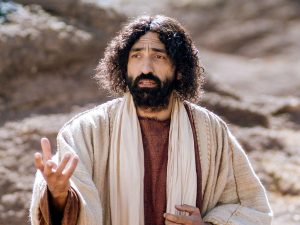 Jesus probably looked something more like this: darker hair, darker eyes, darker skin, different features; a Jewish man from the ancient near east without a pervasive pastel glow.
Jesus probably looked something more like this: darker hair, darker eyes, darker skin, different features; a Jewish man from the ancient near east without a pervasive pastel glow.
But we needn’t be limited to images of the historical Jesus. It’s natural for people in all times and places to imagine that Jesus looks like us. Jesus is the human one, a way that God gets close to us, we want to see ourselves in him. So, if you look hard, you can find images of an Asian Jesus, a Native American Jesus, a Jesus of African origins.
It is comforting to imagine Jesus looking like us, like our family members, like our friends: familiar, relatable. It’s also important as we imagine Jesus into all sorts of different skin tones and cultural identities and social locations that we notice how these identities impact how we understand the image and story of Jesus; and how the image and story of Jesus impacts how we understand people with these identities.
What kinds of people do we imagine in the Holy Family, and how does that impact which families we imagine as holy?
How do we portray a powerful Jesus? What does that say about which humans have power, and the kind of power that Jesus has?
Which kinds of human figures might best express the terror and tragedy of the crucifixion, as we experience it in our world today?
Images of Jesus are powerful: powerful in reflecting our identities and beliefs, and also powerful in confirming or challenging them.
When the statue on the right, a female figure on a cross titled “Christa” was first displayed in the 1980s in St. John the Divine Cathedral in NYC, the suffraganbishop of the Episcopal Diocese of New York called the statue “theologically and historically indefensible” and ordered the artist, Edwina Sandys, to take it away. But why was it so very troubling, to see a female figure on a cross, when we have imagined Jesus in so many ways that do not match his historical identity?
What should Jesus look like if Jesus is for all of us? The artist Janet McKenzie tried to answer this question when she created this image, called Jesus of the Peoples: a Jesus who is perhaps between cultures, even between genders.
But maybe it’s best if we have lots of different images for Jesus: familiar and unfamiliar, comforting and challenging. Just as we use many names for God, using many images for Jesus may be more accurate, and more helpful to our faith, than using only one.
Using many images for Jesus is even more important because most of us still have something like that first image embedded in our subconscious. We’ve just seen this white Jesus so often that without good reminders we may fall back on the assumption that Jesus is white. We may cling to this Jesus, especially those of us who are white ourselves, just as the disciples clung to their ideas of hierarchy; hoping that our cultural biases and desire for precedence need never be disturbed by God.
I think it will do us all good to seek out and spend time with images of Jesus that are not white. As we meditate, all of us, on diverse images of Christ, these Images can serve as icons, as arrows pointing towards the holy human one who is so far beyond our limited understanding, and who calls us to transform our relationships with the humans around us of all skin colors and cultures and social locations.
We, like the first disciples, will probably never truly get it: that the last shall be first, and the first shall be last, and that the kingdom of God belongs to the least of these. But we will at least discover more about this Jesus who does not rule as a tyrant over us; this Christ invites all people into communion in his church, and around his table. May it be so.
